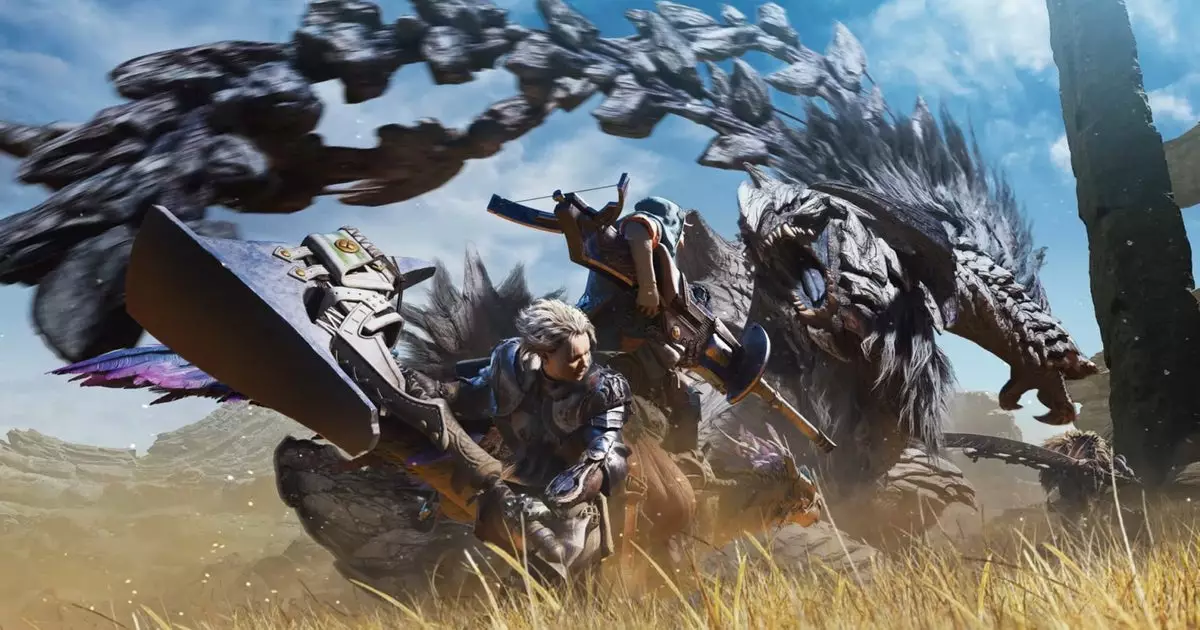In the evolving universe of Monster Hunter, the recently released title Monster Hunter Wilds introduces an intriguing layer of complexity to the franchise. While the game spurs a sense of familiarity with its existing weapon types, director Yuya Tokuda emphasizes the importance of refining and rebalancing these instruments of destruction over introducing entirely new ones. The approach focuses on enhancing the overall player experience rather than cluttering it with additional weapon complexities. This philosophy may seem conservative at first glance, but it lays a groundwork for a more robust and satisfying gameplay experience.
The nostalgia factor is significant for players who remember wielding formidable weapons from earlier iterations, such as the Greatsword or the Hunting Horn. In reflecting on past titles like Monster Hunter Freedom 2, it is evident that many of the weapon classifications remain intact despite cosmetic changes and expanded movesets. The developers have opted to focus their creative energies on existing weapon types rather than venturing into uncharted territory by adding a 15th option. This strategy draws players back into the classic hunt, but it also begs the question: how can the familiarity bring excitement during gameplay?
Innovating within the rigid confines of the existing weapon arsenal presents a unique challenge. Tokuda highlights the difficulty in conceptualizing a new weapon that harmoniously fits into the established lineup without creating overlaps in functionality. This delicate balancing act demands not just creativity, but also an understanding of what players expect from each weapon type. As players engage with weapon combos and cooperative play mechanic adjustments, it becomes essential to maintain a sense of novelty while ensuring that the gameplay remains rooted in tradition.
The notion that new weapons might detract from the effort to balance the existing lineup speaks volumes about Capcom’s commitment to presenting a finely tuned experience. The reasoning behind this decision is that improvements made across all weapon types foster a more engaging multiplayer experience. Each weapon’s intricate relationships with one another exemplify this interdependence—something that, when properly calibrated, can elevate gameplay mechanics while still being accessible to new players. It speaks to the developers’ understanding that depth can be cultivated without the need for introductions of additional chaos.
With the experience gained from Monster Hunter: World and its Iceborne expansion, the design philosophy has evolved to cater to both seasoned veterans and newcomers. Players accustomed to advanced weaponry may feel entitled to an influx of new combos and maneuvers developed for the more proficient adventurer. Still, the challenge remains to serve a dual audience without alienating either side. This delicate balancing act showcases an astute awareness of player engagement, allowing both novice and veteran players to find something that resonates with them.
While new weapon types remain an open possibility, they come with impending creative challenges that require the collaboration of diverse teams—monster designers and weapon craftsmen alike. There lies an exciting opportunity to consider unimaginable weapon designs drawn from innovative monster concepts. The whimsical idea of a wyvern that is composed entirely of balloons or a geometric insect monster hints at an expandable creativity that invites fresh perspectives into the Monster Hunter universe. Although such concepts may be leagues away, they exemplify the kind of innovative thinking that defines the franchise’s allure.
Monster Hunter Wilds exemplifies Capcom’s commitment to balance and refinement over sheer novelty. By honing in on existing weaponry and enhancing the core experience, the game achieves an equilibrium that respects player nostalgia while simultaneously invigorating gameplay. It illuminates an important truth in game design: sometimes less is more. As Monster Hunter continues to flourish, the focus on refining what already exists may just be the key to ensuring the franchise continues to captivate audiences for years to come, offering depth, complexity, and familiarity in an ever-evolving world of fantasy.


Leave a Reply